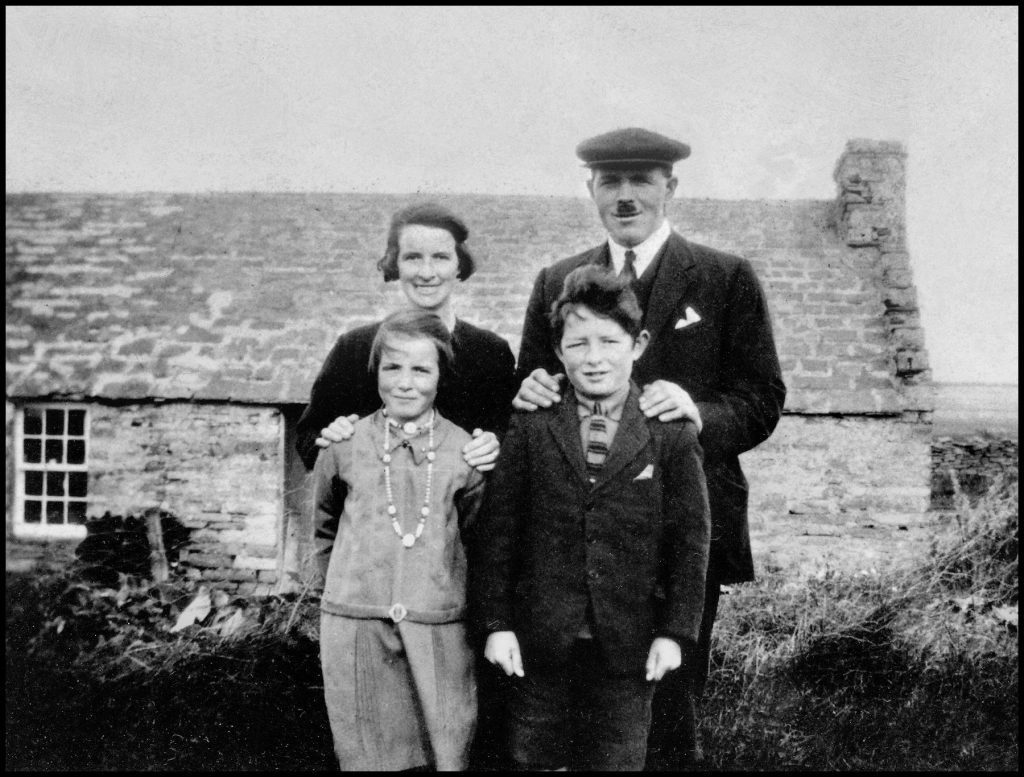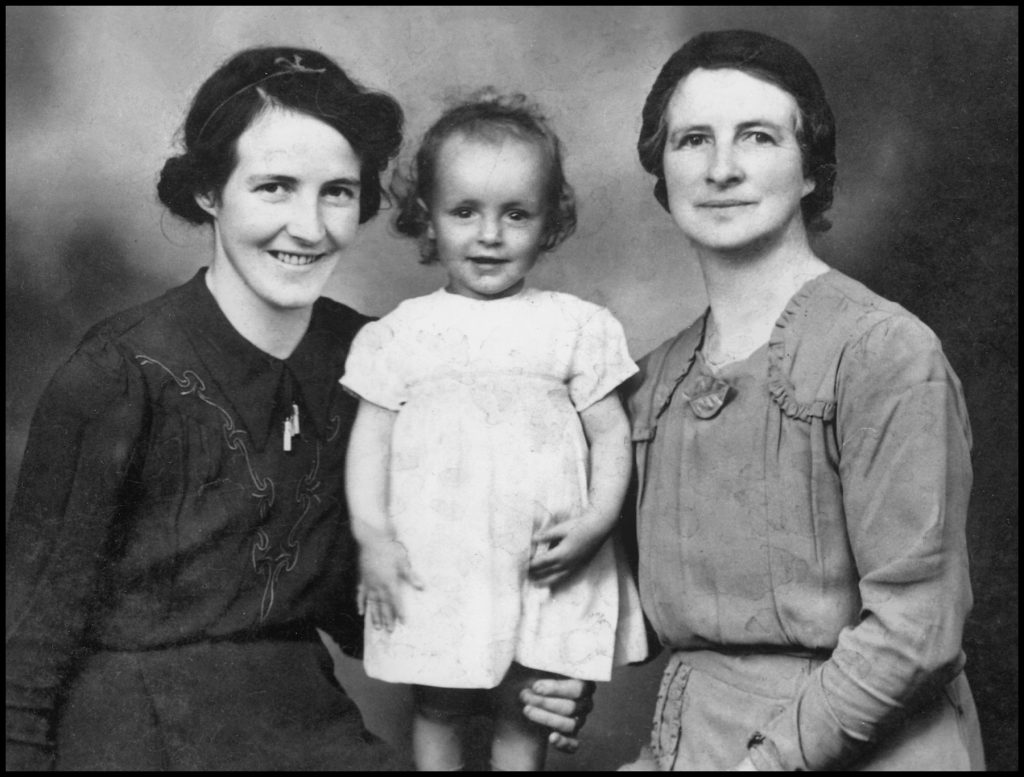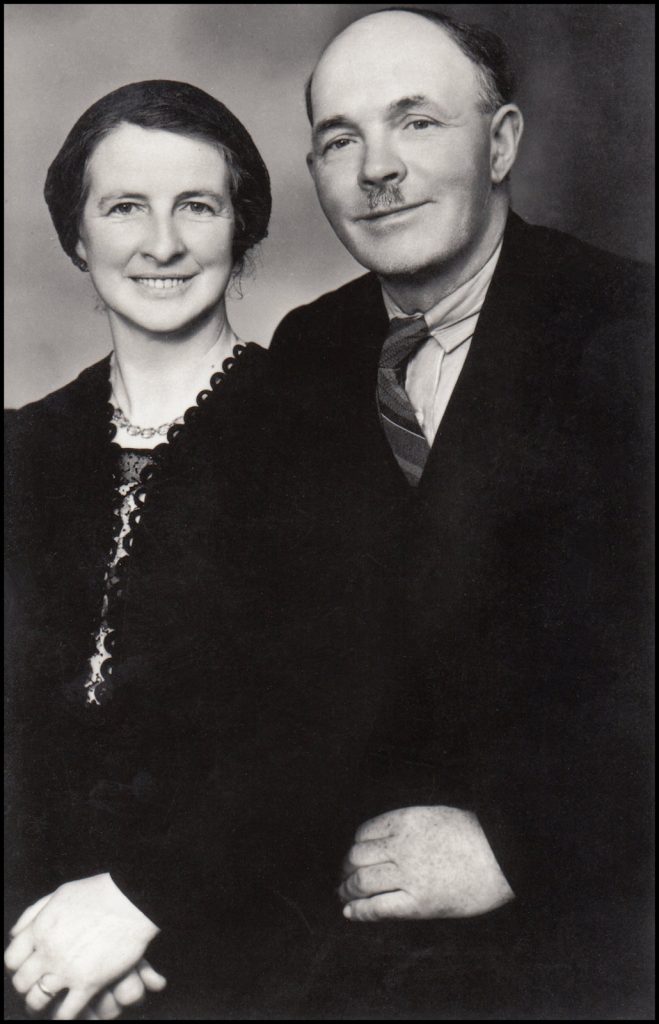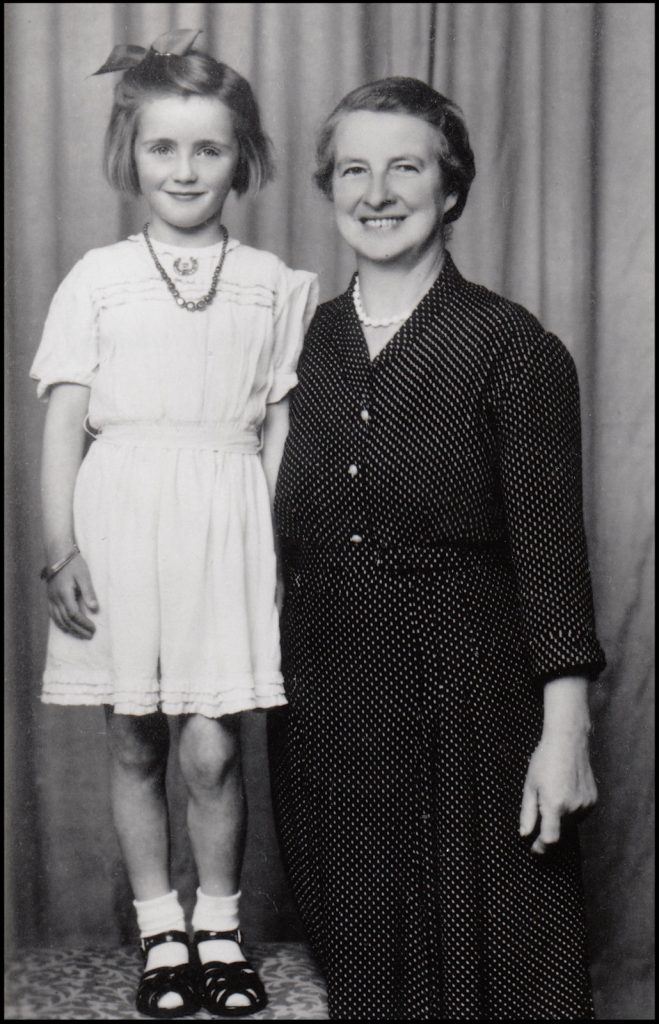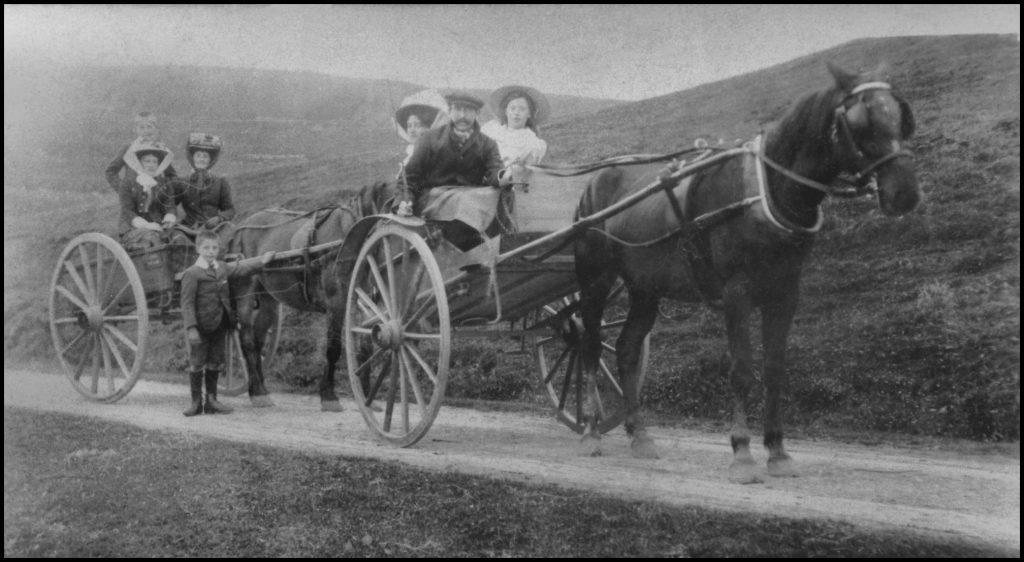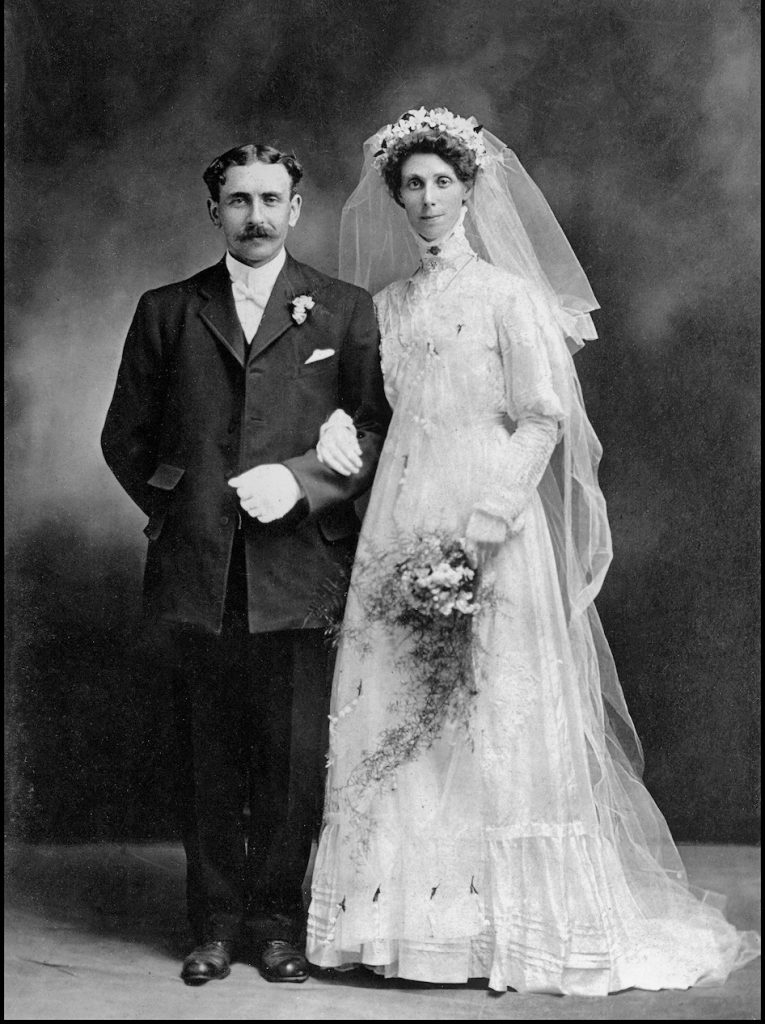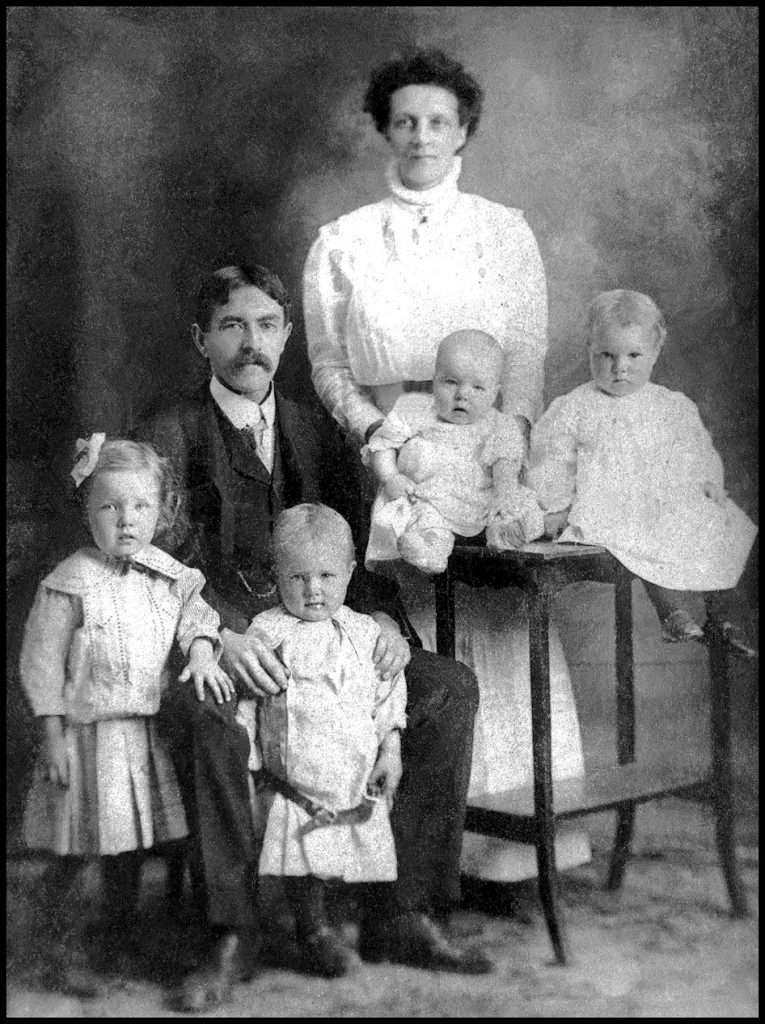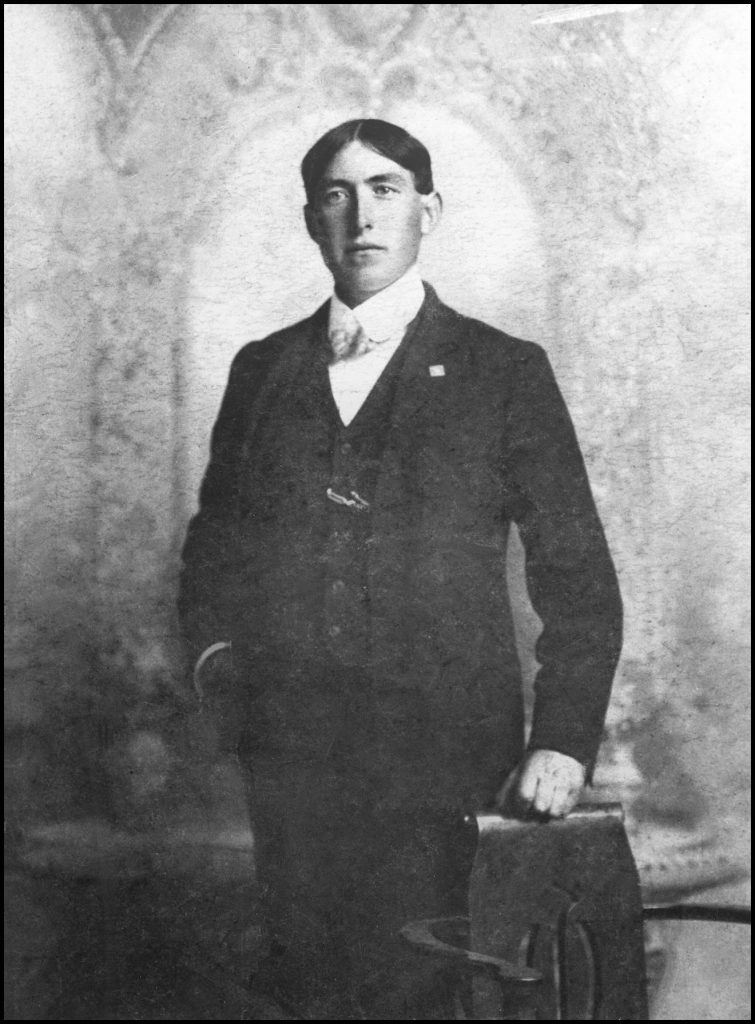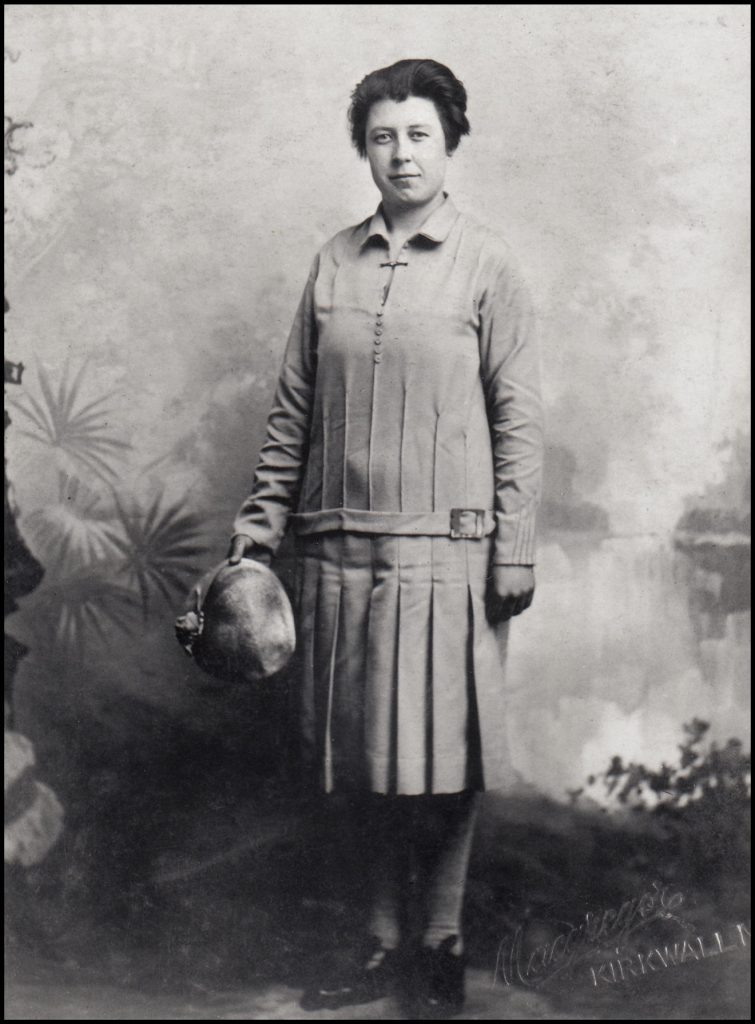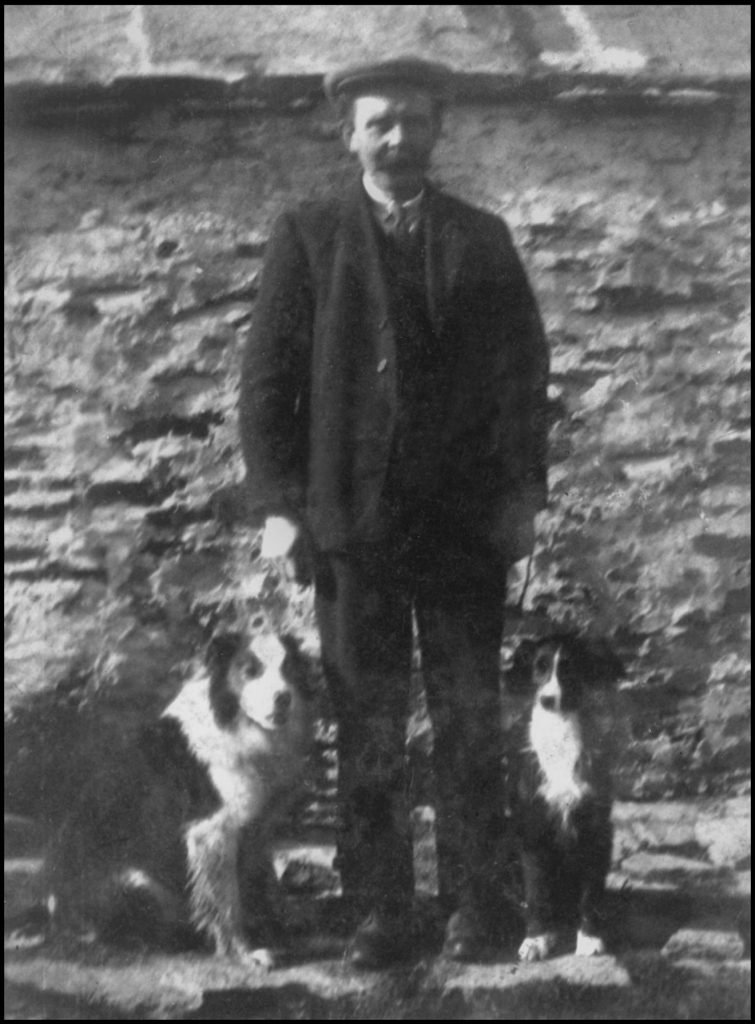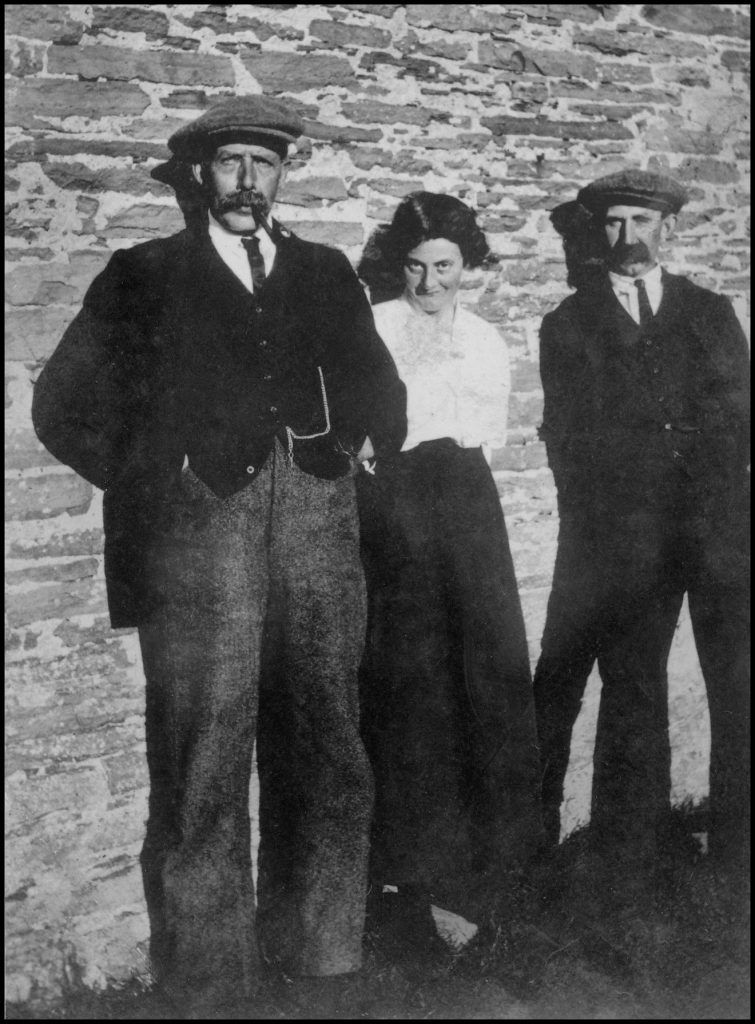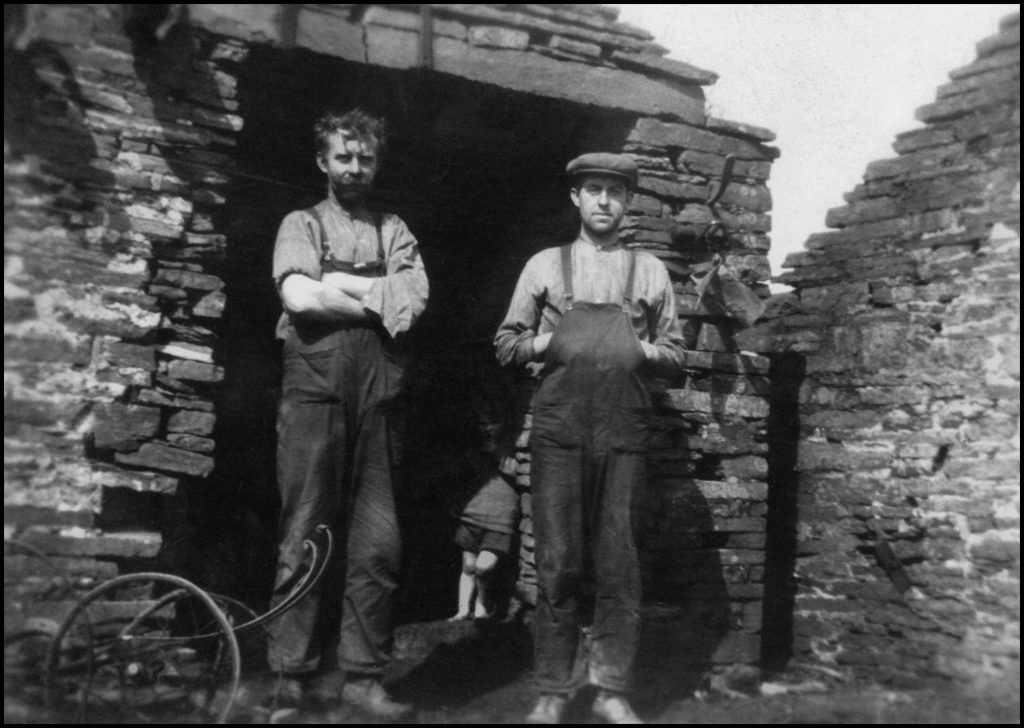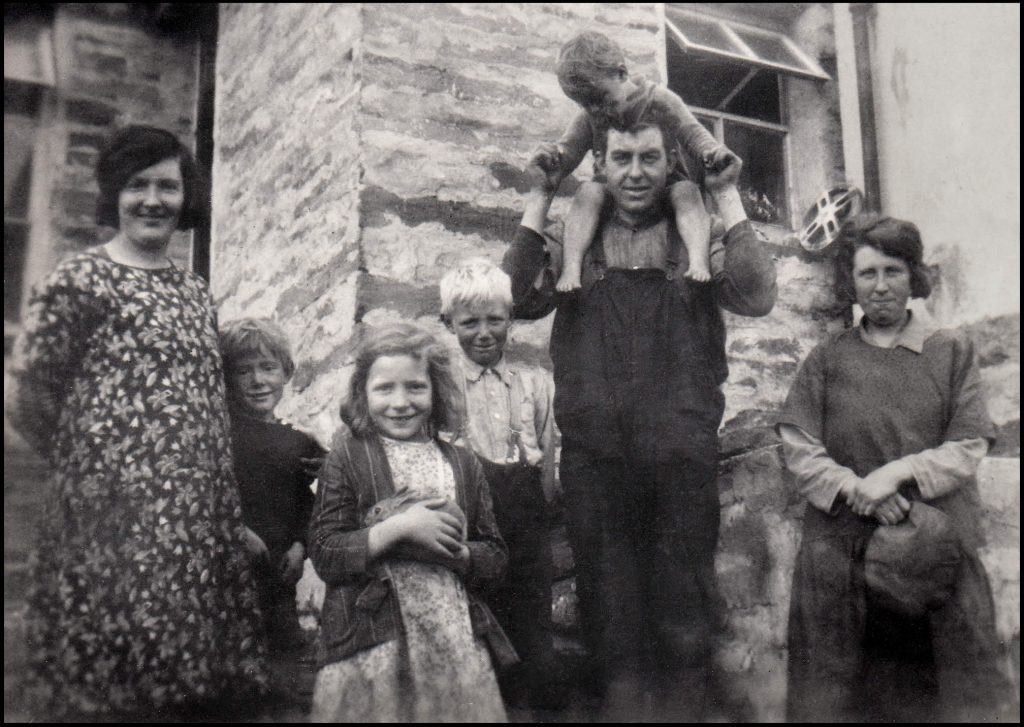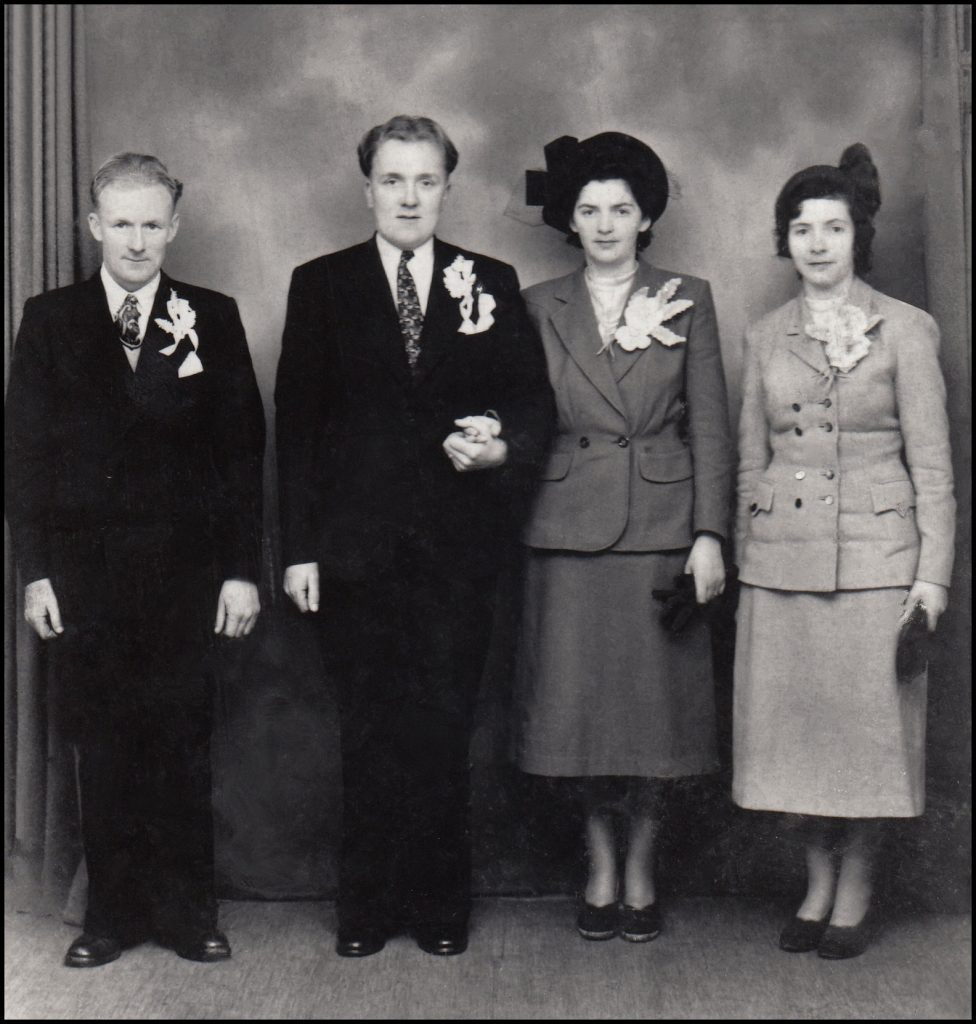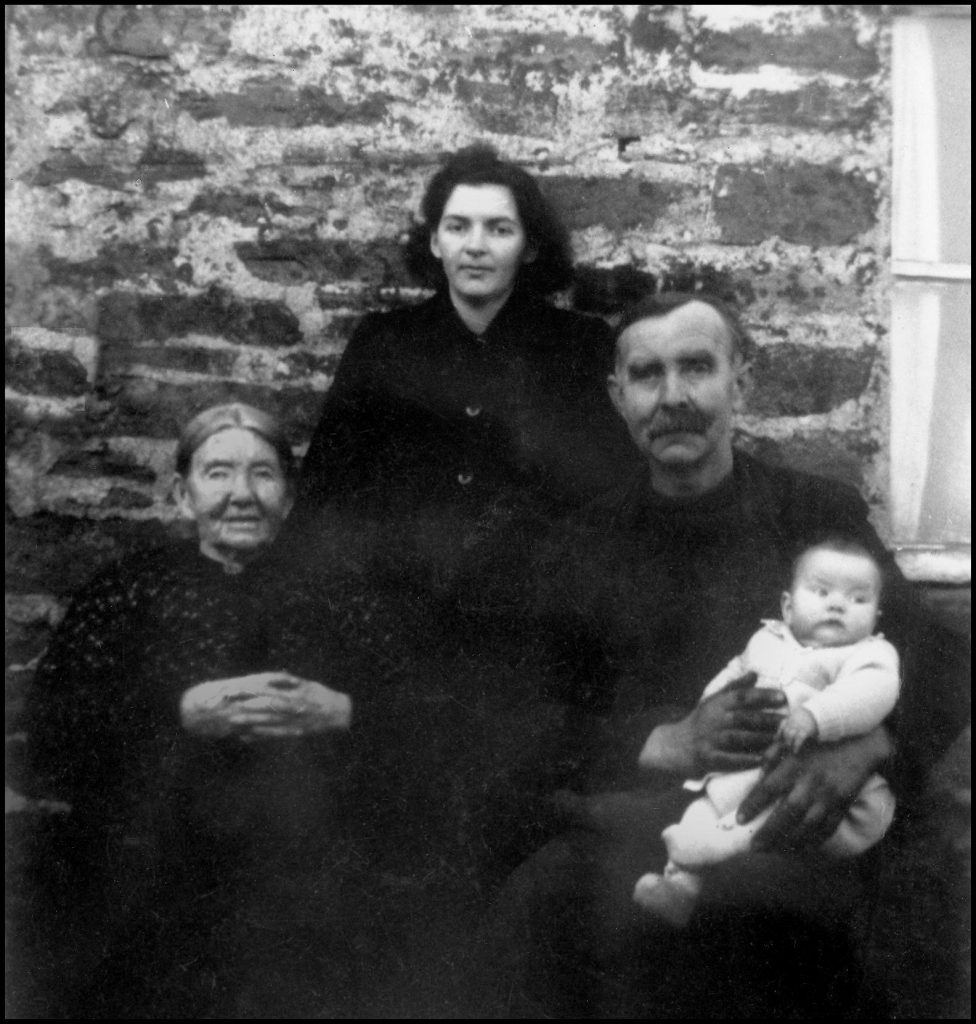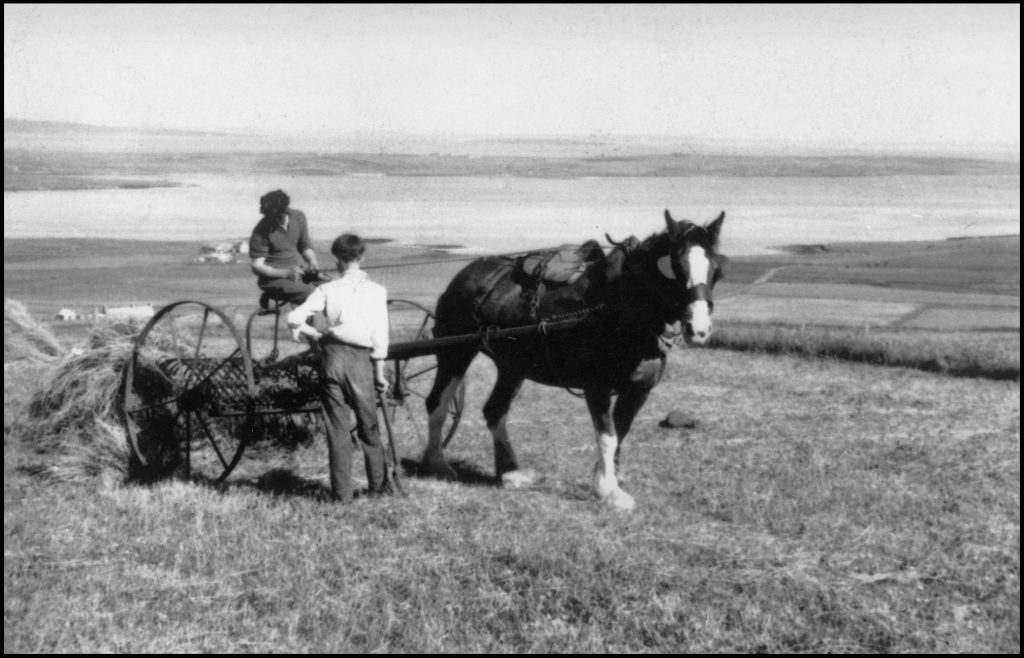Knapper, Grindlay’s Breck, Feeliha’, & Cruannie
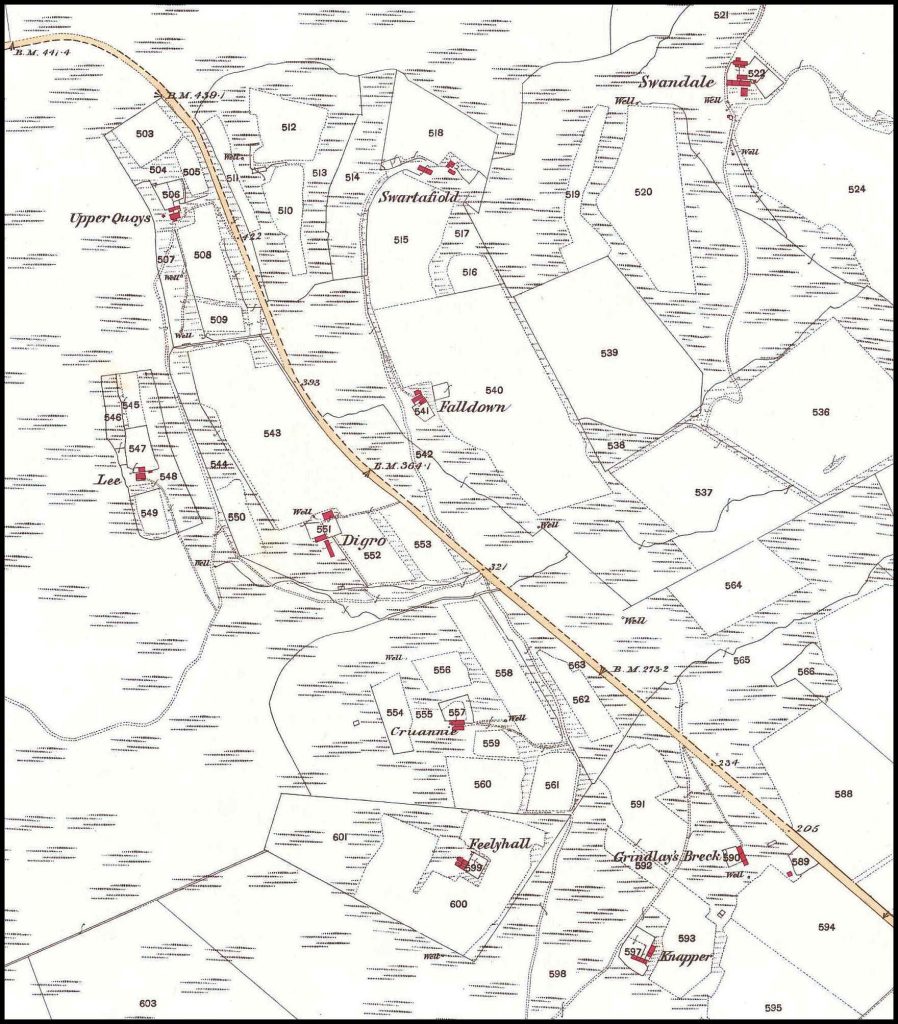
– provided by the National Library of Scotland
KNAPPER
Knapknowes is the name of a vanished house close to the Westness dyke, just below the Quandale school building. It was also the name of an old Sourin croft, as recorded in a Rousay Birth Register of 1825. That house is now called Knapper, and is situated east of Brendale. Hugh Marwick tells us the Old Norse word knappar, plur. of knappr, meaning a knob, or protuberance, is common in Norse place-names. Knapknowes is a semi-translation of Knappar, and it is interesting to note that the original name has existed side by side with its half-translation, and ultimately outlived it.
The census of 1841 has it spelled Knapnows, and occupied by 45-year-old shoemaker Hugh Craigie, his 50-year-old wife Mary Yorston, and three of their children, twins Hugh and Mary, and younger son Robert. Hugh was the son of Hugh Craigie and Barbara Marwick, and was born c.1793. Married on December 6th 1816 he and Mary had five children: Hugh and Mary were born on April 26th 1819; Peter, in June 1821; Robert, in August 1823; and John, who was born in July 1825.
Hugh’s wife Mary had passed away before the census of 1851 was carried out, he being described as a widowed cobbler/farmer. Sons Hugh, and agricultural labourer, and Robert, a fisherman, were with him though. Ten years on, and the house was called Knapper in the census, the annual rent for which Hugh paid £2 10s.
Hugh’s son Robert was 38 years of age when he married 26-year-old Mary Marwick on May 9th 1861. She was the daughter of Robert Marwick, Essaquoy, and Bell Mainland, Cotafea. They had no children of their own, but adopted Mary’s niece, Lizzie Robertson, after the death of her parents. Hugh Craigie died in 1872, and when son Robert took over the tenancy he was paying an annual rent of £3, rising to £4 10s. by 1879 for Knapper and its 7 acres of surrounding land – though that was reduced by £1 thanks to the Crofters Commission findings.
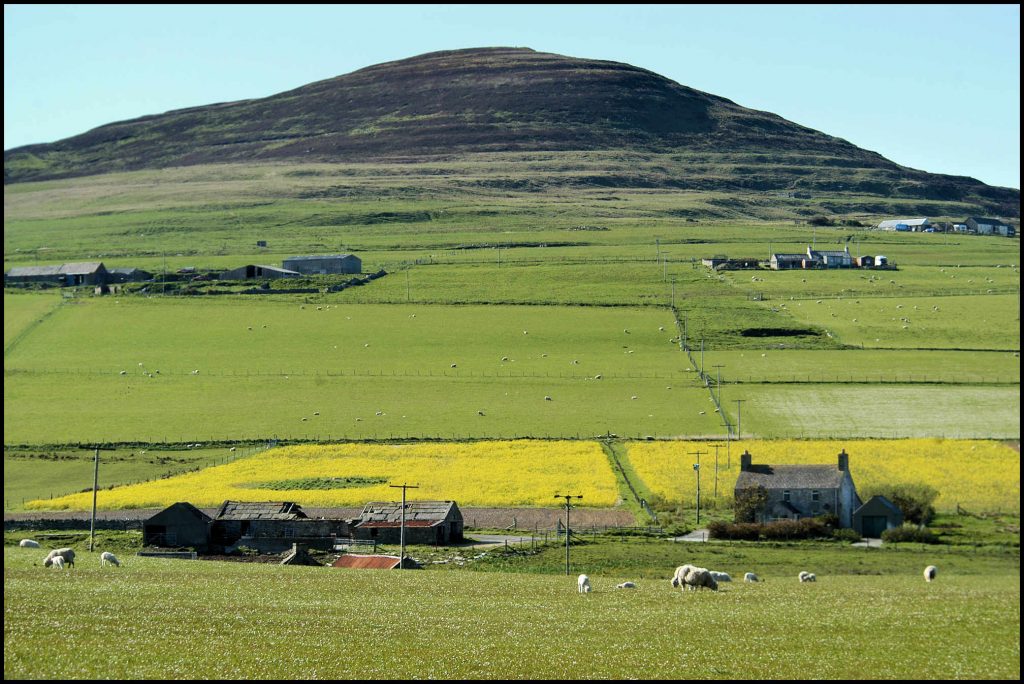
and Cruannie above and extreme right.
Lizzie Robertson, mentioned above, was the daughter of John Robertson and Elizabeth Marwick. John, born in 1840, was the son of John Robertson and Ann Hutcheson, St. Andrews, and Elizabeth, or Betsy as she was known, was the daughter of Robert Marwick, Essaquoy, and Bell Mainland, Cotafea. Betsy died at Mesquoy, Netherbrough, Harray, on November 25th 1869, and her husband John passed away soon afterwards, which led to Lizzie’s adoption. Lizzie was 28 years old when she married James Eunson Laird on December 27th 1894. He was the son of John Laird and Margaret Marwick, Brakedale, St Andrews, Orkney, and was born on July 12th 1864.
Robert Craigie died in October 1908 and his wife Mary passed away seven months later. The new tenants of Knapper were retired farmer Hugh Inkster and his wife Georgina. Originally from Gorn and Hammer in Wasbister, then Geo, Westside and now Knapper, Hugh and Georgina had a hard time of it. Robert C. Marwick writes:- ‘The 15 acres of land at Hammer (15 acres) was removed from the Inksters in 1881 and incorporated into Innister to justify the large new steading the Laird had built there. The Inksters, who had been in Hammer for only 3 years, were forced to sell their stock which had been provided by Hugh Inkster’s mother, Margaret, when she gave up Gorn. They lived on the proceeds for a year or two, but they were then impoverished because, Hugh, being in poor health, was unable to work to provide for his large family. By 1891 they had moved to Geo at Westness and later they moved to Knapper.’ Hugh and Georgina later moved to Myres, where he died in 1933 at the age of 88, as did Georgina within a year when in her 86th year.
Angus and Jeannie Harcus were later occupants of Knapper. Jeannie, or Mary Jane as she was christened, was the daughter of John Inkster and Jane Irvine and born when they were living at Essaquoy, in 1897. On December 28th 1917 she married farm servant Angus Harcus who, at that time, was a member of the Royal Garrison Artillery Territorial Force. He was the son of agricultural labourer Angus Harcus and Jessie Harcus, New Glen, Westray, and was born in 1892. The officiating minister at the marriage ceremony at Essaquoy was the Reverend John Deas Logie, and the witnesses were John Inkster, jnr, and Helen Craigie. Angus and Jeannie had two children: John Angus, born on New Year’s Day 1918, and Clara Margaret, who was born in 1919. She married James Alexander Seator in 1943.
GRINDLAY’S BRECK
Grindlay’s Breck was a small crofter’s house of one storey and thatched beside the road, halfway up the Sourin Brae on the left. Hugh Marwick, in his Place-Names of Rousay, mentions the Old Norse grind-hliðs-brekka, meaning ‘gate-slope.’ Grind is a common term in Orkney dialect for a gate, and was so used in Old Norse – grind-hlið – a gateway or passageway that was fitted with a gate to close it. This compound, or its variant grindar-hlið, appears frequently in Orkney place-names, usually as a house or farm-name, i.e. Grindally, a vanished house just north of Knarston, and in each case must have been given by reason of proximity to one of the ‘slaps’ or gateways through the old hill-dykes, through which animals passed to and from the ‘hill’ or common grazing grounds. Grindlay’s Breck stands on a steep slope just below the line of one of those hill dikes.
The first recorded occupant of Grindlay’s Breck was John Mowat in 1653, followed by Christie Mainland, who lived at Upper Grindly as it was called then, living on independant means. Come the census of 1851 it was spelt Grindles Brake, and 28-year-old farmer and fisherman Robert Mowat lived there with his wife Mary Yorston. Robert was the son of Thomas Mowat and Margaret Marwick of Scowan, near Knarston, and he was born on April 25th 1822. Mary was the daughter of Peter Yorston, Oldman, and Rebecca Craigie, Hullion, and she was born on July 23rd 1816.
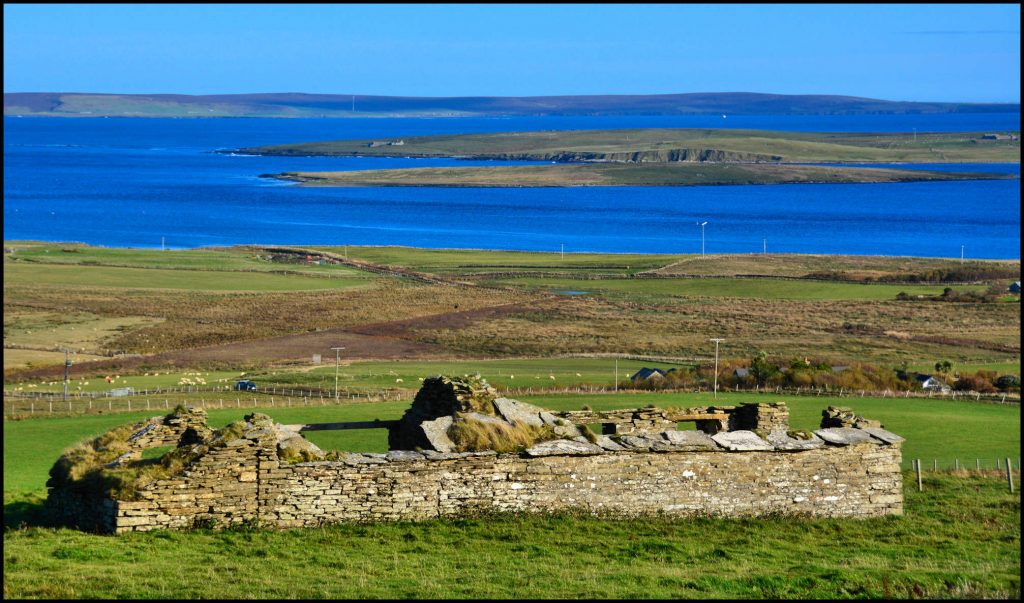
the Westray Firth, and the western coast of Eday
Robert was paying £4 2s 0d rent in 1887 but the following year after a reduction by the Crofter’s Commission, he paid £3 10s 0d. He died in 1892 and his widow Mary took over the tenancy until she passed away early in the morning of January 25th 1900 – cause of death being ‘old age’. Later that year John Logie became the tenant and he paid £5 5s 0d for the 5 acres arable and 2 acres of pastureland. He was a cattle dealer, and he and his wife Mary had moved from Quoygrinnie on the Westside. Their time at Grindlesbreck was short-lived though, for John passed away in February 1906, and Mary died in February 1909.
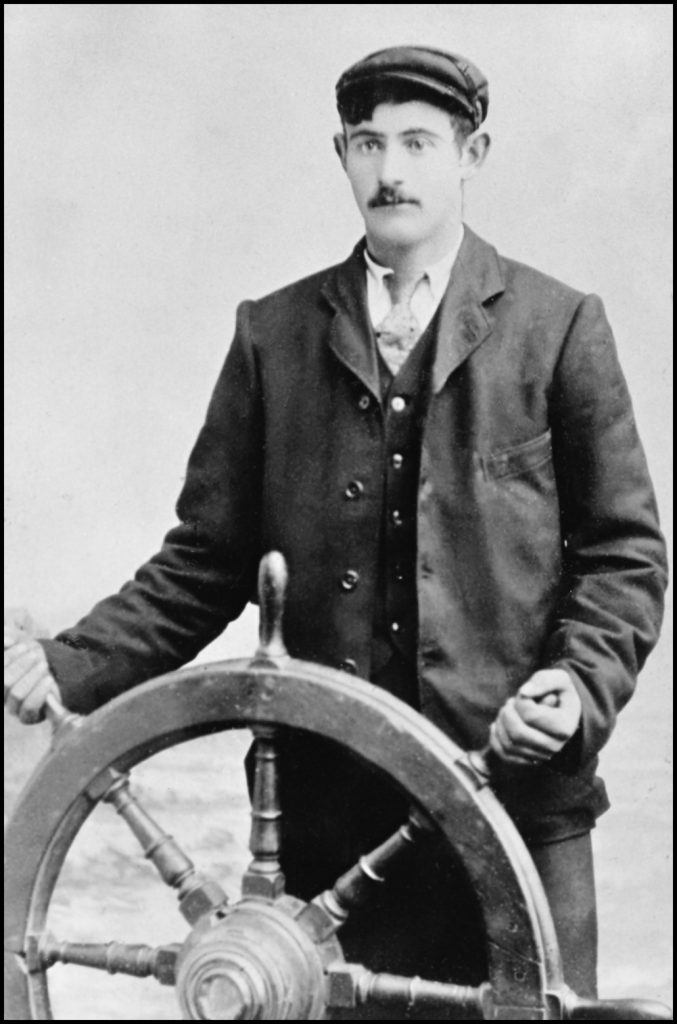
The census of 1911 tells of the Wylie family living at Grindlesbreck, though the head of the household was absent when the count was taken. He was most probably at sea, for John William Wylie earned his living as a fisherman. He was the son of fisherman William Wylie [1847-1885] and Betsy Wylie [b.1845], born at North Side, Burray, on the morning of November 11th 1881, and originally came to Rousay working as a farm servant at Westness. His wife was Maggie Ann McLean, daughter of Duncan McLean and Jane Grieve, and she was born on the evening of August 4th 1882 when they were living at Clumpy. John William and Maggie Ann were married on November 18th 1904 when the McLean family were living at Breval. The officiating minister was the Rev. Alexander Spark, and the ceremony was witnessed by John William’s sister Mina Wylie and Maggie Ann’s brother Kenneth McLean.
Sea-faring man John William Wylie
in his younger days.
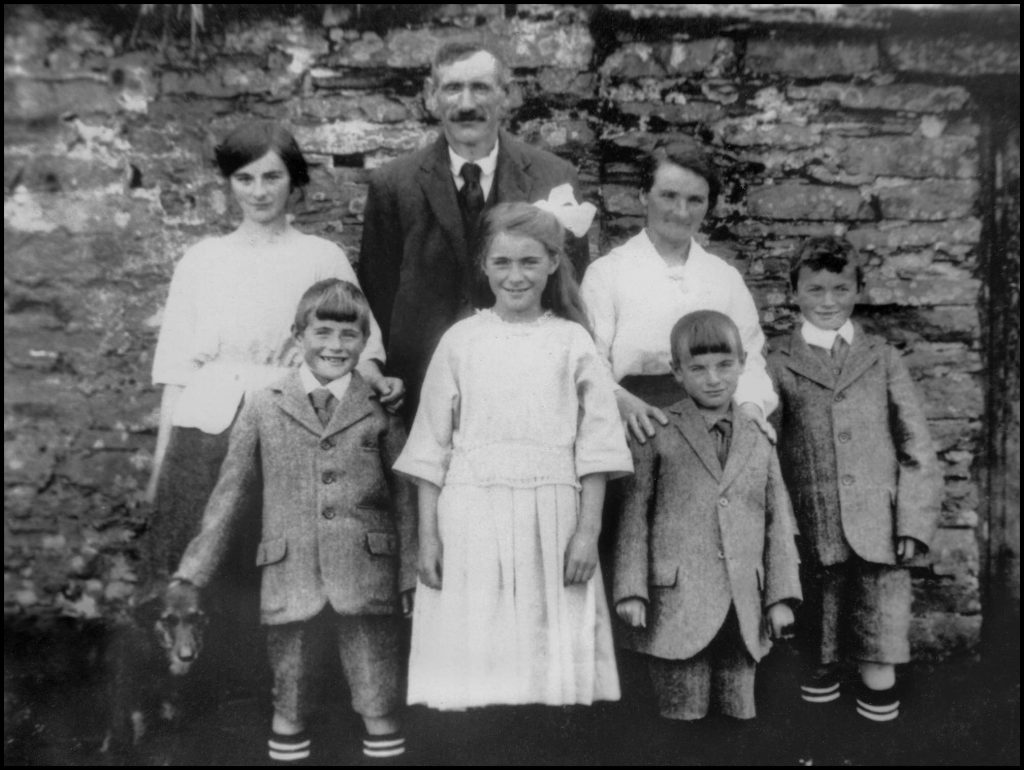
Maggie Jane, born 1905; James William, born 1915; Mary Alexina, born 1911;
Magnus, born 1916; and John Robert, born in 1914.
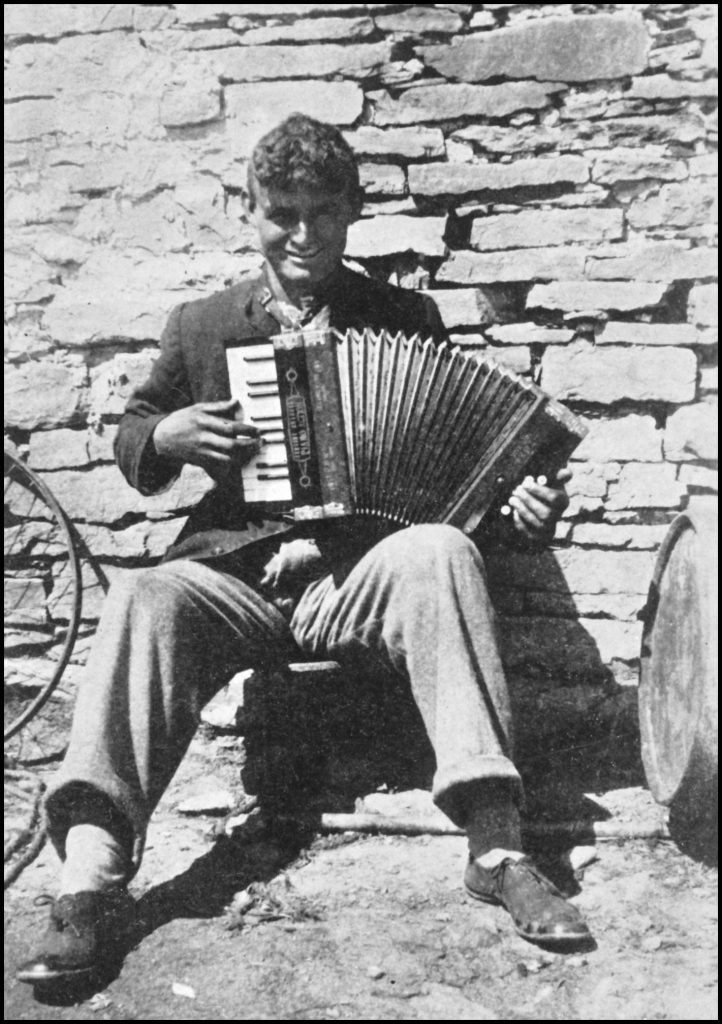
Maggie Anne’s son John Robert Wylie [1914-1947], pictured to the left playing his Genuine Antoria piano action accordion, was a motor mechanic, living in Lyness, Hoy, when he married 21-year-old Gladys Wilson at St Magnus Cathedral, Kirkwall, on January 10th 1941. She was the daughter of ship’s steward Robert Wilson, and Lottie Williamina Hamilton. The ceremony was carried out by cathedral locum tenens James Boyd, and witnessed by John Robert’s brother James William, a naval stores officer at Lyness at the time, and Gladys’s sister Lottie, of East Moaness, Melsetter. John Robert and Gladys had a daughter Gladys, who was born in 1942.
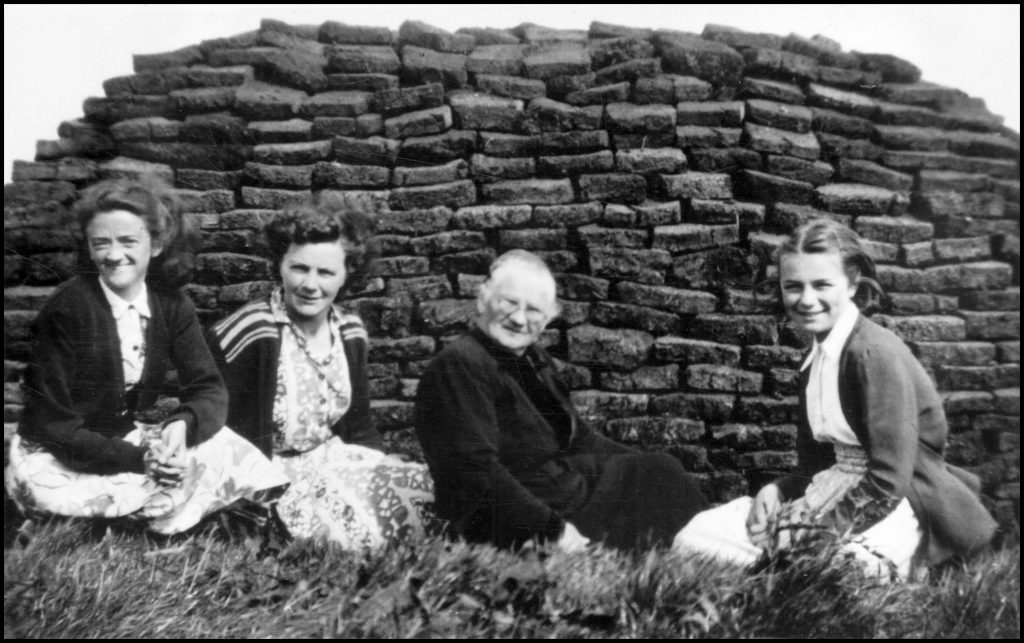
FEELIE-HA’
Feelie-ha’ was the name of a cottage far up on the hillside above the farm of Brendale and croft Grindlays Breck in Sourin and was occupied by Andrew Moss in 1737 and John Craigie in 1798.
In the census of 1841 it was spelt Philihaw, and occupied by 50-year-old widow Mary Craigie, who was living there, by independent means, with her son William, a 25-year-old fisherman. The annual rent at this time was 12s.
Mary was the daughter of William McKinlay and Isabel Lero and she was born in 1788. She married William Craigie of Tou, and they had four children; James, born in 1811, William, who was born about 1814; and Hugh and Isabel, who were born in 1815 and 1817 at Mid Quandale.
In the census of 1871 the cottage was spelt Fillyhall, and occupied by Robert Marwick, a small farmer and fisherman. ‘Robbie o’ Scockness’, as he was later known, was the son of Robert Marwick and Bell Mainland of Essaquoy, born on September 4th 1845. He married 22-year-old Ann Ballick Hourston, daughter of carpenter William Hourston and Mary Ann Rendall, Scapa, St Ola, on October 25th 1866 and they eventually had seven children: Isabella was born in June 1867; Mary Ann, in July 1869; Jemima Baikie, in December 1871; Robert William, in April 1874; Margaret Johan, in 1876; Elizabeth, in July 1879; and Jessie, who was born in November 1882.
The Marwicks moved to Woo, but sadly not long after they did so wife and mother Ann died of peritonitis during the evening of February1st 1892, and was later interred in the Scockness kirkyard.
In 1885 Miss Ann Gibson was the tenant of Feeliha’, paying £2.0.0. for the 3 acres arable and 3 acres pasture, but in 1891, when in her 75th year, she rented the house for just 6d., the land being rented annually by James Leonard, Cruannie, at the cost of £1. Ann was the daughter of James Gibson and Christian Harcus, Brendale, and she was born there on October 29th 1816. She never married, but at the time of the 1891 census she had a lodger to keep her company at Feeliha’, 14-year-old Mary Ann Harrold. She was the daughter of William Harrold, Hammermugly, and Elizabeth Marwick, Hanover, and was born on June 2nd 1876. She later married James William Grieve, Whiteha’, on February 12th 1897. Ann Gibson passed away in 1905 and Feeliha’ remained unoccupied after that. Nothing remains of it today.
CRUANNIE
In an old rental dated 1653, James Leonard is on record as being the first inhabitant of the small croft of Cruannie, high up on the south-eastern slope of Kierfea Hill, between Digro and Feelyha’.
It is not until the census of 1841 another tenant is mentioned – named Robert Harrold. He was the son of William Harrold and Mary Ann Mainland, and he was born in 1798. He married 34-year-old Ann Banks on January 31st 1822, and they lived at Cruannie where Robert worked as a handloom weaver and mason. They had five children: Mary, who was born in August 1822; John, in December 1824; Elizabeth, in March 1827; Helen (Nelly), born in July 1829, but died in infancy; and another Helen, who was born in December 1831.
Ann Banks died in 1859. She was buried in Scockness Kirkyard and the inscription on her gravestone reads as follows:-
In memory of Ann Banks
who was espoused to Robert Harrold
who died trusting in Jesus
March 31st 1859 aged 73 years
On May 22nd 1860 Robert married Ann Grieve, the daughter of Robert Grieve and Ann Work of Outerdykes, but she was to die eight years later at the age of 47. She gave birth to a daughter Ann in March 1863, but she died herself at the age of 18. They were also buried in Scockness Kirkyard, the headstone reading thus:-
Sacred to the memory of Ann Grieve
wife of Robert Harrold who died
25th June 1868 aged 47 years
also their daughter Ann
who died 9th January 1882 aged 18 years.
“They are preserved forever.”
Five months after his wife Ann died Robert married a third time, on November 25th 1868, which was also prior to their daughter Ann passing away. He was 70 years of age when he married Cecilia Craigie, the daughter of William Craigie and Barbara Craigie, who was born in an unrecorded house in Wasbister in January 1817. Cecilia died in 1880, and as mentioned above, Robert’s daughter Ann died in 1882. Robert himself passed away in 1888 at the age of 90.
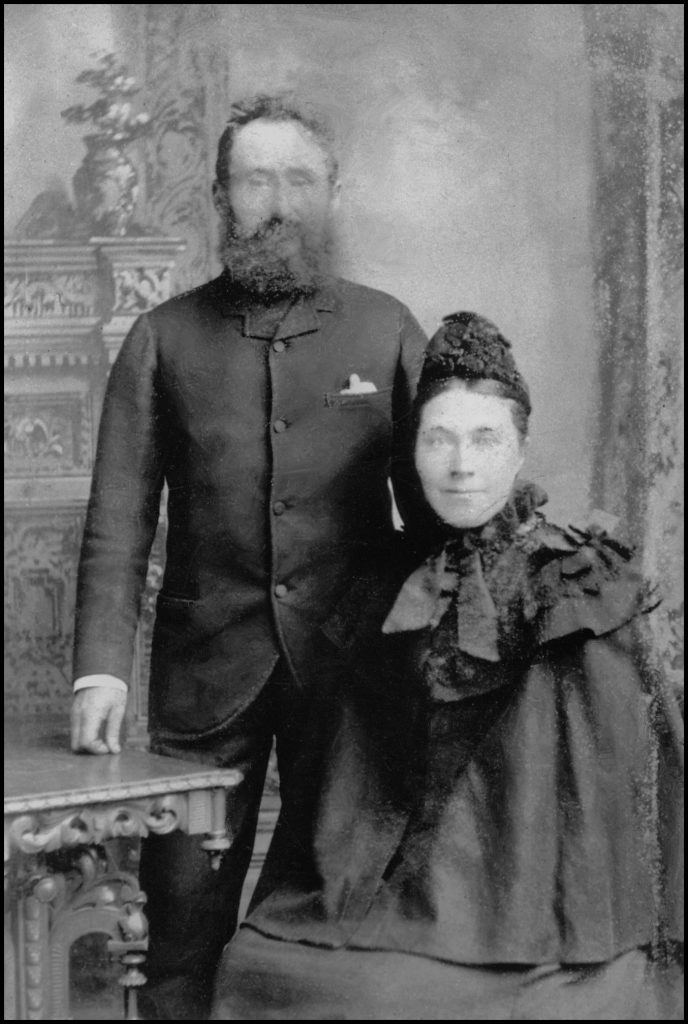
By 1891 farmer and stonemason James Leonard was the tenant of Cruannie, having moved from Gorn when it and neighbouring farm of Hammer were amalgamated into the farm of Innister in Wasbister. James was paying £4 rent for his new house and its surrounding 5 acres arable and 10 acres pasture land. James Inkster Leonard was the son of James Leonard, Grain, and Cecilia Inkster, Tou, and he was born on December 22nd 1854 and christened four days later. On November 6th 1874 he married Ann Marwick, daughter of shoemaker David Marwick, Whitemeadows, later Tou, and Betsy Clouston, Tou, who was born in October 1856. The ceremony at Tou was conducted by the Rev. Neil Patrick Rose, and witnessed by William McKay and James Kirkness. James and Ann had seven children: David Marwick, was born at Tou on January 30th 1875; James, at Quoygray on April 4th 1877; John, at Gorn on March 8th 1879; Archibald McCallum, at Gorn on January 23rd 1881 [christened after the minister of the island’s Free Church]; William Arthur, at Gorn on March 16th 1883; Ann Elizabeth Laing, at Gorn on April 14th 1885; and Mary, who was born at Cruannie on August 18th 1888. For reasons that are unclear, firstborn David Marwick Leonard grew up with his grandparents, shoemaker David Marwick and his wife Betsy Clouston at Tou.
James Inkster Leonard and his wife Ann Marwick
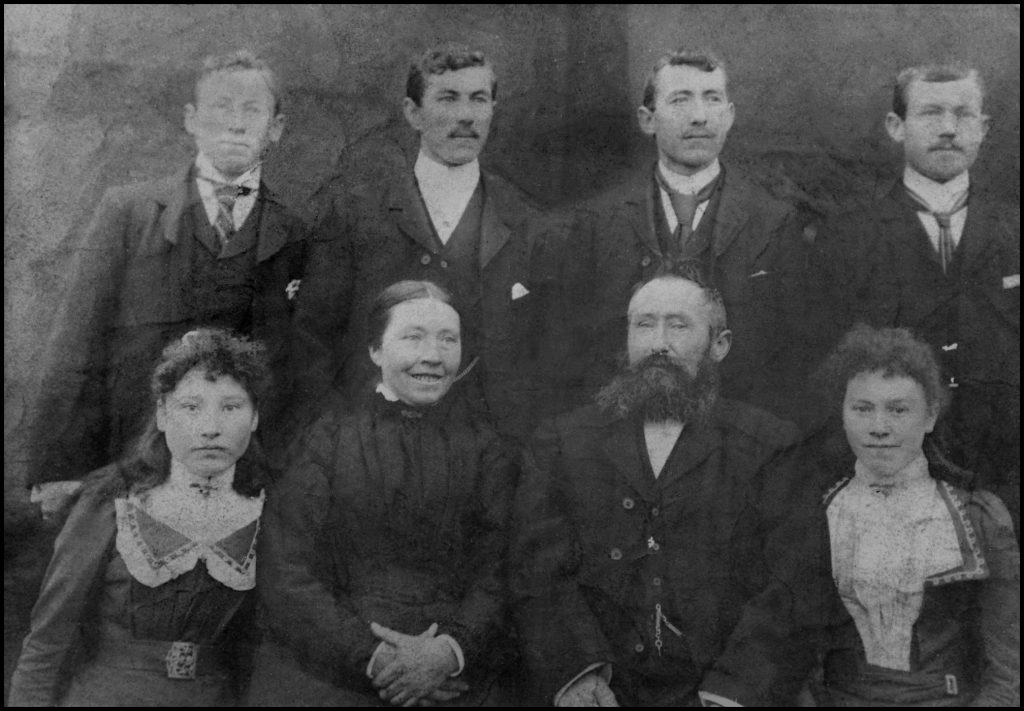
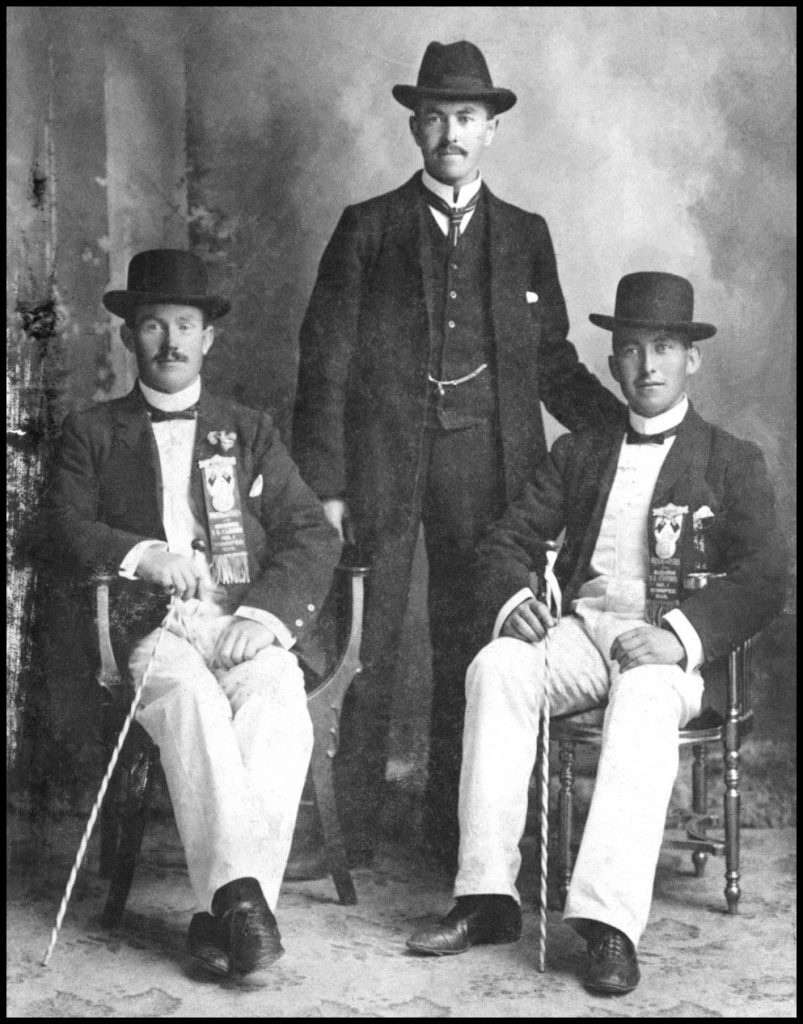
The photo to the right, courtesy of the Orkney Library & Archive, shows the Leonard brothers of Cruannie, John, William, and Archie, c1898. Initially I thought that two in regalia were affiliated to a Masonic order, but subsequent investigation leans towards the fact they were involved with a temperance society.
The Temperance Movement was strong and supported by all sections of the Rousay community. Temperance meetings were well attended and a visiting lecturer had once noted that Rousay was a most sober community, although he deplored ‘the filthy rot-gut ale’ which was still brewed by some of the small farmers. The Temperance Movement was particularly associated with the brothers’ one-time neighbour James Leonard, the ‘champion of the Rousay crofters,’ though they were not directly related. After his eviction from the island James Leonard became a paid lecturer of the Scottish Temperance League, in addition to being an official of the Highland Land Law Reform Association The laird was an enemy of any kind of drunkenness and it was his influence which kept the island free of licensed premises. Such was Rousay’s reputation for sobriety that, being an island and licence-free, it ‘was much resorted to as an asylum for inebriates.’
[The Little General and the Rousay Crofters, by
W P L Thomson, John Donald Publishers, Edinburgh,
was referred to regarding the paragraph above.]
Later occupants of Cruannie were the Grieve family. Blacksmith Robert Grieve was the son of William Leonard Grieve, Whiteha’, and Christina Craigie, Fa’doon, and he was born in November 1891. On February 12th 1920 he married 22-year-old Catherine Lyon, daughter of Robert Watson Lyon and Catherine Lyon, Ervadale, the ceremony being performed there by the Rev. John Deas Logie, and witnessed by Mary Ann Grieve and James Robert Lyon. Robert and Catherine had six children: Kathleen Christine, who was born in 1921; Mabel Leonard, in 1922; Robert William, in 1924; James Arnold, in 1926; George Lyon, in 1928; and John Denis, who was born in 1941.
[All pictures courtesy of the Tommy Gibson Collection – unless otherwise stated]
